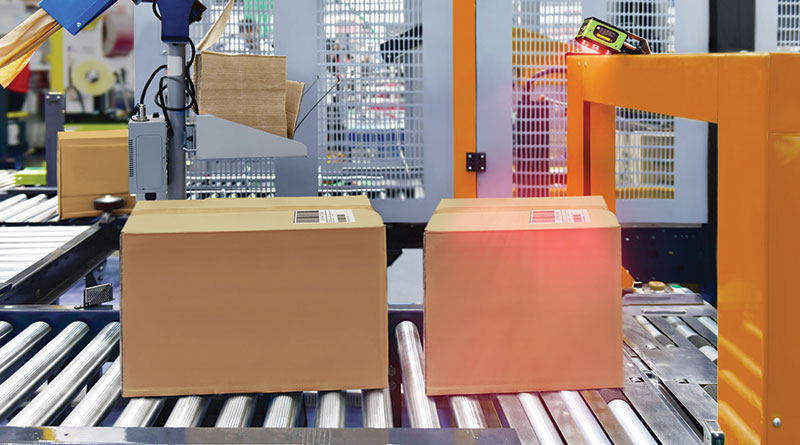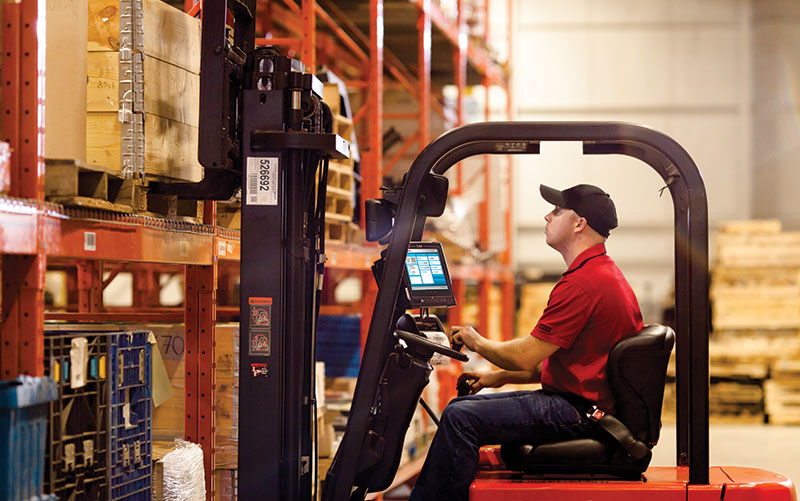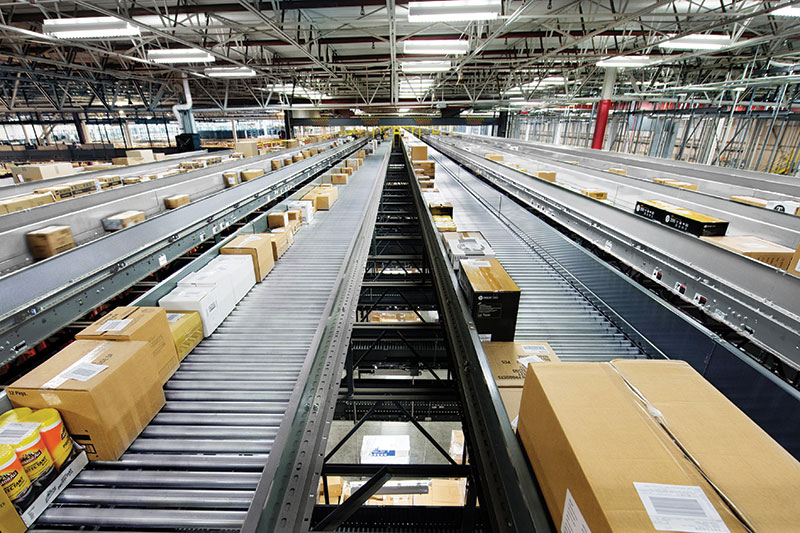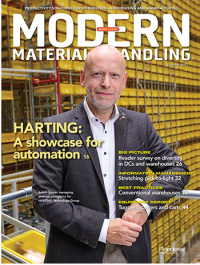Conventional warehouse tune up
Well-defined processes, clean data, a little automation and a skilled workforce deliver that needed spark to conventional warehouses.
Close your eyes for just a minute and imagine a conventional warehouse.
You probably see plenty of lift trucks handling pallet loads as well as cases. Maybe some conveyor, some rack. Perhaps even some light automation such as a carousel. What you may not see at first, but know are there, are bar codes and other data management tools. And the most hidden force multiplier is probably a warehouse management system (WMS).
Most everyone will agree that these are the most common elements of a conventional warehouse today. And not every facility has all of those elements. But having many of them has been a distinguishing characteristic for some time.
It raises an interesting question: Is your conventional warehouse any good at what it has been doing? Do you know? Just as importantly, is the warehouse up to what it will have to do in the future?
Mark Wheeler, Zebra’s director of supply chain solutions, has a starting point for you. It’s called a warehouse maturity model, and starts like this. A sign of the times: warehouses are maturing quickly, but not all at the same pace (and not necessarily as fast as they could or should).
That last part mirrors the results of a recent KPMG survey of CEOs. Sixty three percent of them say their overall company processes and execution are too slow. And they don’t see that getting better any time soon.
This is not time to assume that conventional warehouse processes and execution are any different. After all, change is tough within the four walls, and there’s been more than enough change to go around lately.
To put that in perspective, “60% to 70% of warehouses typically have workable processes,” says Chris Slover, vice president of sales at Fortna. As he continues, most warehouses have a sound logic for how they are set up. However, what has been working is not necessarily the full answer going forward.
The value of labor
“This is open season for operations managers wanting to improve their processes,” explains Ahmed Arif, senior director of regional offices at Bastian Solutions. But he also notes that so many “are going for the home run with advanced automation.” But it doesn’t have to be that way.

Interviews with several experts on conventional warehousing made it clear that you can improve processes without a complete hardware and software transformation.
Key concepts here range from slotting to clean data and reduction in travel time. Labor management is not to be overlooked either. And, yes, technology is part of this evolution, ranging from bots (which everyone is in love with right now) to software such as warehouse execution systems (WES).
“We also have to recognize that beyond changing processes and implementing new tools, cultural barriers to change do exist. For instance, Harry does putaway, and Amy does item picking. And they don’t necessarily want to do anything else,” explains Dan Gilmore, chief marketing officer at Softeon.
Historically, the three key elements in optimizing conventional warehouse processes are labor, technology and ROI. When asked to rank order the three today and 10 years from now, Chris Rowland, director of solutions consulting at Honeywell Intelligrated, said labor, ROI, tech today and labor, tech, ROI in 10 years. The swap of ROI and tech is due to his expectation that the cost of technology will steadily come down over time.
This brings us to the point where most conventional warehousing upgrade discussions begin: Labor.
While most people right now seem focused on the difficulty of finding labor, Bryan Jensen focuses on training and retaining labor. Jensen is chairman and executive vice president of St. Onge.
“You want to make your place the best place to work,” Jensen says. Fortunately, you can accomplish that in many different ways. “In the big picture, you want to ensure every associate feels ownership of what they do and feels that they are a contributing part of the warehouse family.”
Associate training is key here. It starts, says Jensen, with documented processes that ensure consistent processes out on the floor. That process documentation also includes a feedback loop that allows associates to provide input to update those that need improvement. “People need to know that management is engaged and listening,” says Jensen. That requires discussion and identification of good ideas. “A $50 bonus for good ideas has a ripple effect,” he adds.
Optimizing processes
In fact, that $50 bonus is actually one form of ROI, even though it’s not typically thought of that way. For the $50 paid, a process is improved and new efficiencies unlocked. There’s a measurable payback there that’s not any different than gains made with a capital expenditure such as software like a WMS.
And you can find plenty of opportunities to gain payback in a conventional warehouse. Just ask Gilmore.
He immediately turns to task interleaving and picking strategies. Both processes are guided by a WMS, but it’s all about the efficiency that delivers value.
“Task interleaving alone can deliver up to a 20% productivity improvement,” says Gilmore. On the picking side, batch and cluster picking strategies deliver far more process efficiency than sequenced pick tickets with no logic to the flow of goods or people, he adds.
Get Gilmore on a roll here and he spins up to the concept of a perpetual picking cart. He describes a warehouse with 20 pick carts, each with nine order slots. That allows 180 orders to be processed at a time. Or does it?
He suggests that as an order on a cart is filled, that tote is dropped off and an empty one for a new order is added. As a result, each cart can process more than nine orders over time, essentially becoming the perpetual picking cart Gilmore originally referenced.
Slotting is another opportunity. Not just because it affects a broad range of processes, but because “so many warehouses do slotting poorly,” says Fortna’s Slover.
But there is hope, says Jensen. “Define slotting based on product demand not on unit demand. It’s all a matter of detailed velocity analysis and facility layout. Fifty percent of the time tied up in pick processes is devoted to travel. If you put the right products in the right places and select the right pick paths, you can maximize velocity and reduce as much as 50% in time and labor during the picking process,” says Jensen.

He warns that getting slotting right once is not enough. It constantly needs “to be maintained” to ensure it matches how demand for products shifts over time. “Slotting is not a one and done. It needs to be reviewed and, if necessary, adjusted every quarter,” says Jensen.
What’s new in capital expenditures
For at least the foreseeable future, lift trucks, conveyors and rack are likely to be the backbone of conventional warehouses. Conventional is conventional, after all. However, a clear shift is underway to some more automated types of equipment and software.
The big story is bots. Or AMRs (autonomous mobile robots). Or cobots. Whatever your favorite nomenclature, they are small, autonomous robots that scoot along the warehouse floor. Some bring shelves of product to pickers. Others carry product to storage or shipping. And who knows what else they might do in the future.
But regardless of the task, bots eliminate travel distance and time for people. And since it’s generally accepted that roughly 50% of time in the picking process is due to travel, bringing bots in makes a huge shift in how all that travel gets done without adding extensive, fixed automation to a conventional warehouse.
“Bots are a fundamental shift in automation,” says Zebra’s Wheeler. He goes on to explain that bots are intelligent, scalable, can easily change processes and workflow and are less risky than traditional forms of fixed automation. He says bots open the door to new design rules on the floor of the warehouse.
In other words, bots are a big deal. So big in fact Zebra recently paid $290 million for the 95% of bots supplier Fetch Robotics it did not already own.
What’s just as interesting here is Zebra is a supplier of wearable computers including bar code printers and scanners. Wheeler talks about the need for clean data through that equipment to drive processes and efficiencies. Ensuring accurate picks and replenishments is crucial when there is no time for corrections and do-overs, and wearable scanning is unmatched there. An increasing number of segments are concerned with lot control, expiry dates and serialized inventory. Efficiently verifying that at the point of activity requires wearable technology. And communicating to the worker effectively all of the task information they need while simultaneously tasking the AMRs will deliver the best result in terms of labor efficiency and robot utilization.
Clean data is also essential to the WES systems that augment WMS. As Gilmore explains, a WES provides “real-time visibility to orders and offers opportunity to relieve congestion on the warehouse floor and optimize order fulfillment efficiencies.”
While WES have traditionally been associated with automated warehouses, Gilmore says the software is beginning to gain a foothold in conventional warehouses. Typical benefits include increased throughput and velocity, and an ability to solve processing bottlenecks.
Looking over the conventional warehouse landscape, Arif of Bastian says the foundation for future efficiencies rests with a combination of well-defined operational flows and a well-trained workforce driven by clean data. A little bit of automation won’t hurt either. Together, that combo will tune up any facility, says Arif.

Article Topics
Automation News & Resources
Walmart chooses Swisslog AS/RS and software for third milk processing facility Lucas Watson appointed CSO for Körber’s Parcel Logistics business in North America 60 Seconds with Bob Trebilcock, outgoing executive editor, Modern Materials Handling Kathleen Phelps to join FORTNA as chief financial officer Coles automates grocery distribution in Australia 2024 Intralogistics Robotics Survey: Robot demand surges Warehouse automation extends life of cheese DC by a decade More AutomationLatest in Materials Handling
Registration open for Pack Expo International 2024 Walmart chooses Swisslog AS/RS and software for third milk processing facility NetLogistik partners with Vuzix subsidiary Moviynt to offer mobility solutions for warehouses Materials Handling Robotics: The new world of heterogeneous robotic integration BSLBATT is looking for new distributors and resellers worldwide Lucas Watson appointed CSO for Körber’s Parcel Logistics business in North America Hyster recognizes Dealers of Distinction for 2023 More Materials HandlingAbout the Author
Subscribe to Materials Handling Magazine

Find out what the world's most innovative companies are doing to improve productivity in their plants and distribution centers.
Start your FREE subscription today.
April 2024 Modern Materials Handling

Latest Resources












